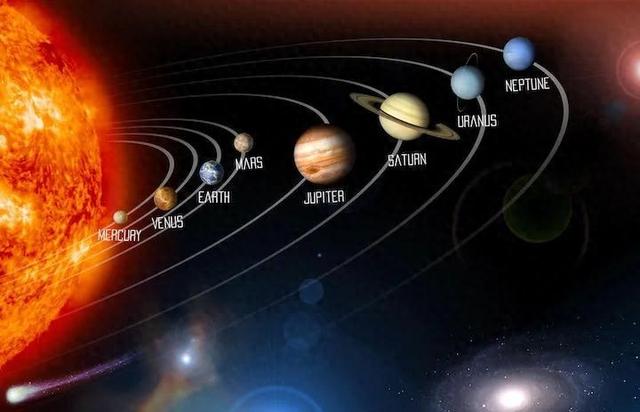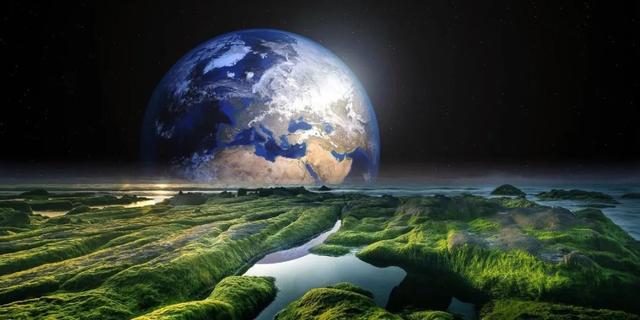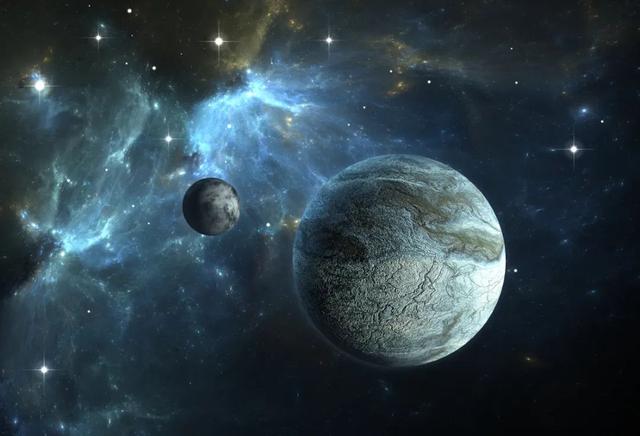【往期回顾】
【本期内容】
Scientists have discovered a theoretically habitable, Earth-size planet
科学家发现了一颗理论上可居住的地球大小的行星

Two teams of scientists have discovered a theoretically habitable planet, smaller than Earth but bigger than Venus, orbiting a small star about 40 light-years away.
两组科学家发现了一颗理论上可居住的行星,它比地球小,但比金星大,围绕着一颗约40光年外的小恒星运行。
The exoplanet, named Gliese 12b, orbits a cool red dwarf star situated in the constellation Pisces and is about 27% the size of our sun and 60% of its temperature, according to the two studies published on Thursday in The Astrophysical Journal Letters and Monthly Notices of the Royal Astronomical Society.
周四发表在《天体物理学杂志快报》和《皇家天文学会月报》上的两项研究表明,这颗名为Gliese 12b的系外行星围绕着一颗位于双鱼座的冷红矮星运行,其大小约为太阳的27%,温度约为太阳温度的60%。
Since its star is so much smaller than the sun, Gliese 12b still falls within the habitable zone — the ideal distance away from a star where liquid water can exist - even though it completes its orbit every 12.8 days.
由于它的恒星比太阳小得多,Gliese 12b仍然落在宜居带内——距离可以存在液态水的恒星的理想距离——即使它每12.8天完成一次轨道运行。

Working on the assumption that the exoplanet doesn’t have an atmosphere, scientists calculated its surface temperature to be around 107 degrees Fahrenheit (42 degrees Celsius).
基于这颗系外行星没有大气层的假设,科学家计算出它的表面温度约为107华氏度(42摄氏度)。
“We’ve found the nearest, transiting, temperate, Earth-size world located to date,” said Masayuki Kuzuhara, a project assistant professor at the Astrobiology Center in Tokyo and co-leader of one of the research teams with Akihiko Fukui, a project assistant professor at the University of Tokyo, in a statement.
东京天体生物学中心的项目助理教授Masayuki Kuzuhara在一份声明中说:“我们发现了迄今为止距离我们最近的、过境的、温带的、地球大小的世界。”他与东京大学项目助理教授Akihiko Fukui共同领导了一个研究小组。
Once temperate Earth-size planets have been identified, scientists can then analyze them to determine which elements are contained in their atmospheres and, crucially, whether water is present to sustain life.
一旦确定了温带地球大小的行星,科学家们就可以对其进行分析,以确定其大气中含有哪些元素,至关重要的是,是否存在水来维持生命。
“There’s only a handful (of exoplanets) we’ve found that are good candidates for that. And this is our nearest and so that’s quite a major discovery,” Larissa Palethorpe, a doctoral student at the University of Edinburgh and University College London who co-led the other study, told CNN on Friday.
爱丁堡大学和伦敦大学学院的博士生拉里萨·帕莱索普周五告诉美国有线电视新闻网:“我们发现的(系外行星)只有少数是很好的候选行星。这是我们最近的发现,所以这是一个相当重大的发现。”拉里萨·帕莱索普是另一项研究的共同负责人。

Understanding Gliese 12b
了解Gliese 12b
To spot Gliese 12b, scientists used the publicly available data collected by NASA’s Transiting Exoplanet Survey Satellite (TESS) — a telescope that stares at tens of thousands of stars every month, tracking their changes in brightness, which can be evidence of orbiting exoplanets.
为了发现Gliese 12b,科学家们使用了美国国家航空航天局的凌日系外行星勘测卫星(TESS)收集的公开数据,TESS是一台每月观测数万颗恒星的望远镜,追踪它们的亮度变化,这可能是绕着系外行星运行的证据。
It is easier for astronomers to find exoplanets orbiting red dwarf stars since their relatively small size results in a greater dimming effect during each transit.
天文学家更容易找到围绕红矮星运行的系外行星,因为它们相对较小的尺寸会在每次凌日期间产生更大的变暗效应。
At the moment, scientists are unsure exactly what constitutes this planet’s atmosphere, whether it even has one and if water is present, though Palethorpe said they aren’t expecting to find water there.
目前,科学家们还不确定这颗行星的大气层究竟是由什么组成的,它是否有大气层,以及是否存在水,尽管帕莱索普说他们预计不会在那里找到水。
“There could be no water, and then we know a runaway greenhouse effect has already happened on this planet and it’s more like Venus,” she said. “There could be water, in which case it’s more like us… or there are signatures that can be detectable that would be able to show you that the runaway greenhouse effect is in progress so it could be losing water.”
她说:“可能没有水,然后我们知道这个星球上已经发生了失控的温室效应,它更像金星。”。“可能有水,在这种情况下,它更像我们……或者有可以检测到的特征,可以向你表明失控的温室效应正在进行中,因此它可能正在失水。”

For the next stage of analyzing the exoplanet’s atmosphere, scientists are hoping to use the James Webb Space Telescope and conduct spectroscopy analysis. This method involves capturing starlight that shines through an exoplanet’s atmosphere and seeing which wavelengths are absorbed by certain molecules, revealing their presence in the atmosphere.
在分析这颗系外行星大气的下一阶段,科学家们希望使用詹姆斯·韦伯太空望远镜进行光谱分析。这种方法涉及捕获穿过系外行星大气层的星光,并观察哪些波长被某些分子吸收,从而揭示它们在大气中的存在。
As well as shedding light on the exoplanet itself, Palethorpe said scientists are hoping that this work can help us understand our own planet better.
帕莱索普说,除了揭示系外行星本身,科学家们希望这项工作能帮助我们更好地了解我们自己的星球。
“What this planet will teach us in particular is what happened for Earth to stay habitable but for Venus to not… It can tell us the habitability patheways that planets take as they develop,” she said.
她说:“这颗行星将特别教给我们的是,地球保持宜居性,但金星却不能……它可以告诉我们行星在发展过程中采取的宜居路径。”
But though the exoplanet could potentially be habitable for humans and is relatively “near” our solar system in astronomical terms, it is unlikely that anyone will visit there soon.
但是,尽管这颗系外行星可能适合人类居住,并且在天文学上相对“靠近”我们的太阳系,但不太可能很快有人去那里。
“It’s not reachable, it’s 12 parsecs away,” said Palethorpe, adding that it would take about 225,000 years to reach Gliese 12b with the fastest spacecraft that currently exist.
帕莱索普说:“它不可能到达,距离我们12秒差距。”他补充说,用目前最快的航天器到达Gliese 12b大约需要22.5万年的时间。
【译注】
秒差距。天文长度单位,基于恒星视差为1秒弧时距地球的距离。以地球公转轨道的平均半径为底边所对应的三角形内角称为视差。当这个角的大小为1秒时,这个三角形的一条边的长度(地球到这个恒星的距离)就称为1秒差距。

【Source】www.cnn.com
【Translated by】Spark Liao (廖怀宝)
【Illustration】From Bing
